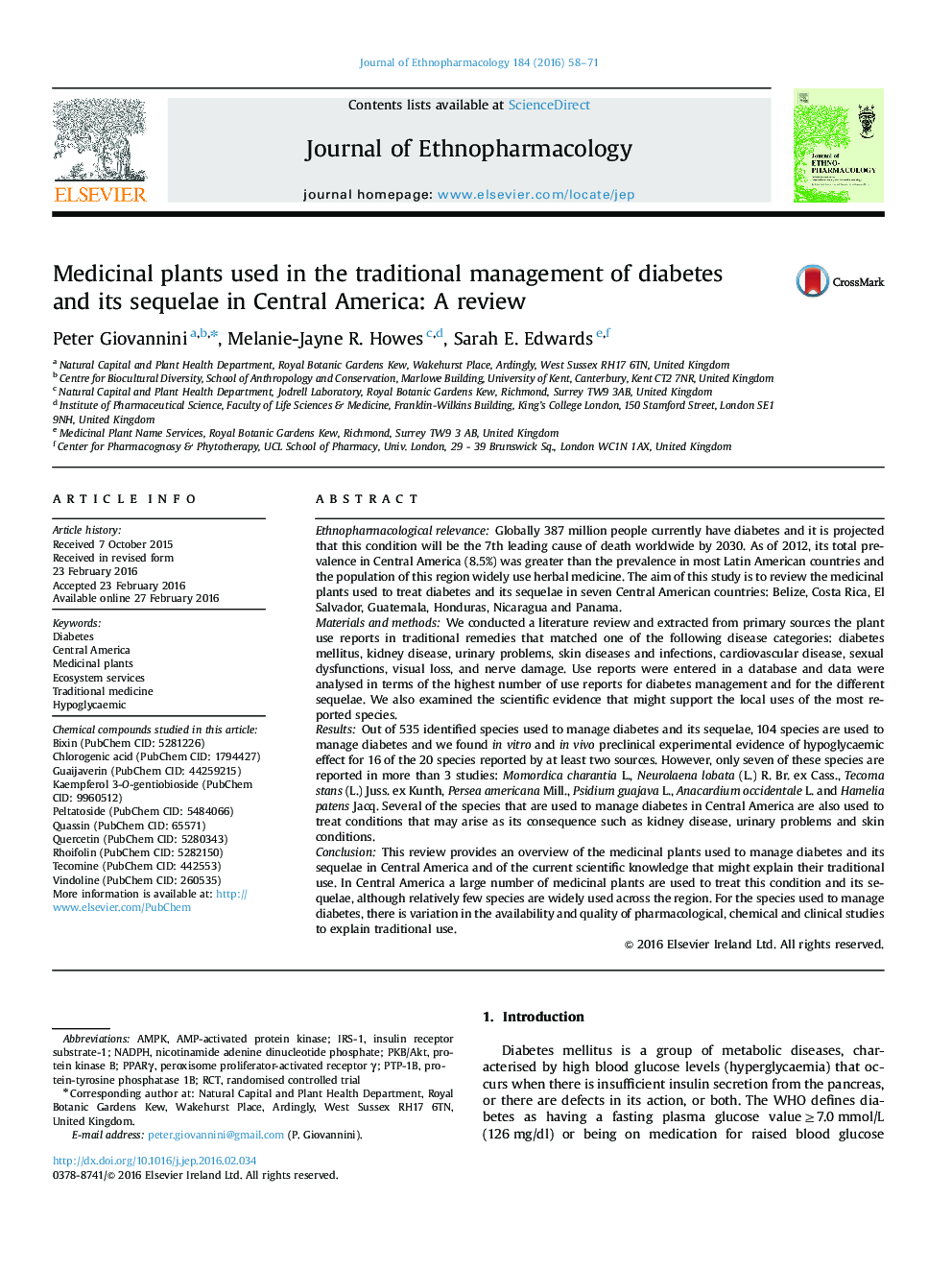| Article ID | Journal | Published Year | Pages | File Type |
|---|---|---|---|---|
| 2544791 | Journal of Ethnopharmacology | 2016 | 14 Pages |
Ethnopharmacological relevanceGlobally 387 million people currently have diabetes and it is projected that this condition will be the 7th leading cause of death worldwide by 2030. As of 2012, its total prevalence in Central America (8.5%) was greater than the prevalence in most Latin American countries and the population of this region widely use herbal medicine. The aim of this study is to review the medicinal plants used to treat diabetes and its sequelae in seven Central American countries: Belize, Costa Rica, El Salvador, Guatemala, Honduras, Nicaragua and Panama.Materials and methodsWe conducted a literature review and extracted from primary sources the plant use reports in traditional remedies that matched one of the following disease categories: diabetes mellitus, kidney disease, urinary problems, skin diseases and infections, cardiovascular disease, sexual dysfunctions, visual loss, and nerve damage. Use reports were entered in a database and data were analysed in terms of the highest number of use reports for diabetes management and for the different sequelae. We also examined the scientific evidence that might support the local uses of the most reported species.ResultsOut of 535 identified species used to manage diabetes and its sequelae, 104 species are used to manage diabetes and we found in vitro and in vivo preclinical experimental evidence of hypoglycaemic effect for 16 of the 20 species reported by at least two sources. However, only seven of these species are reported in more than 3 studies: Momordica charantia L., Neurolaena lobata (L.) R. Br. ex Cass., Tecoma stans (L.) Juss. ex Kunth, Persea americana Mill., Psidium guajava L., Anacardium occidentale L. and Hamelia patens Jacq. Several of the species that are used to manage diabetes in Central America are also used to treat conditions that may arise as its consequence such as kidney disease, urinary problems and skin conditions.ConclusionThis review provides an overview of the medicinal plants used to manage diabetes and its sequelae in Central America and of the current scientific knowledge that might explain their traditional use. In Central America a large number of medicinal plants are used to treat this condition and its sequelae, although relatively few species are widely used across the region. For the species used to manage diabetes, there is variation in the availability and quality of pharmacological, chemical and clinical studies to explain traditional use.
Graphical abstractFigure optionsDownload full-size imageDownload high-quality image (234 K)Download as PowerPoint slide
